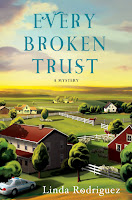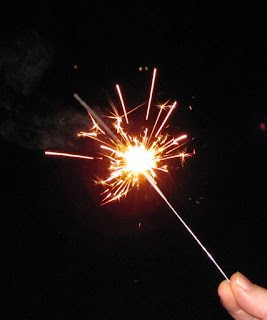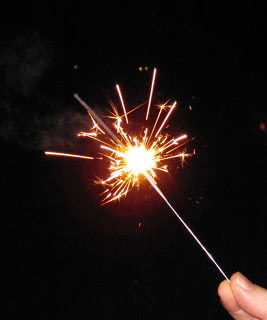by Linda Rodriguez
As an artist and creative person, I can experience times when I
reach down for ideas, for creative excitement, for images, and come up
temporarily empty. These have usually been times that have combined lots of
creative overwork and lots of business work—taxes, promotion, correspondence,
contracts, freelance editing, etc. This kind of emptiness and feeling
creatively dry can be terrifying, but I’m now used to it, and I know what to do
to refill the well and spark new creativity. In these circumstances, it’s
necessary to take time to do things to build up new creativity energy within
you. So here are ten ideas to get you started.
Journal Writing—This is the backbone of the creative life,
especially for writers. I’m not necessarily talking about a daily diary. This
is a notebook in which you write about what you see and hear, turning it into
dialogue or sensory description. This is where you can work with writing
prompts from books, workshops, tapes, and DVDs, your version of the pianist’s
daily scales. Set a kitchen timer for a few minutes and do some freewriting to
unload some of the chattering of your surface mind and move into deeper ideas.
Read Poetry—I’m a poet, as well as a novelist, but I’ve been
surprised by how many commercially successful novelists I’ve met who say they
regularly or occasionally read poetry as a springboard for their writing. It
actually makes great sense because the poet deals in imagery, which is the
language of the right (creative) brain. I
know that, whenever I read poetry, it sets my mind whirling with tons of ideas
and images. I have come up with ideas for entire novels from reading a poem.
Read Something Very Different for You—If you always read and write
poetry, check out a popular novel. If you’re a mystery reader, take a look at
what science fiction writers are coming up with. If you read and write literary
fiction, pick up a romance novel. Jog your mind from its habitual ruts of
thinking and imagining. Stretch out of your comfort zone. Even if you don’t
like what you read, it should still shake up your mind enough to start
generating ideas, images, and characters.
Singlehanded Brainstorming—Most of us have been taught how to do
and forced to sit through group brainstorming sessions before. Take those
techniques and a sheet of paper with pen (or iPad or laptop), get comfortable,
set a timer again, and start throwing out ideas at top speed. Same rules as
with the group process. You can’t disqualify any idea, no matter how
unrealistic. You want to generate as many ideas as you can as quickly as you
can. Just list them down the page—or even use a voice recorder to capture them. After the timer goes off, you
can go down the list considering the possibilities you’ve listed. Look for
possibilities to combine aspects of ideas. Write down any new ideas that get
sparked by your consideration of the ideas already down on the page. Choose one
or two promising (or least abhorrent) ideas and freewrite about them in your
journal.
Making Lists—I love listmaking. Make lists of ideas, of
characters, of backgrounds you’d like to use someday, of isolated bits of
dialogue or description, of actions you’d like to see a character to take. My
favorite is to write a list of scenes I’d like to read—exciting scenes,
action-filled scenes, emotional scenes, surprising scenes, suspenseful scenes.
They don’t have to have anything to do with any project you’re working on or
any character you are writing or have written. They just need to be scenes
you’d love to read—because scenes you’d love to read are scenes you’d love to
write.
Visit a Museum, Gallery, Play, Film, Concert—We writers live and
breathe words. Sometimes we need to get out of our heads and see or hear art
that isn’t primarily word-based. It can be especially fruitful to go to a film
in a language you don’t understand or an art exhibit of a kind you know nothing
about. When we have no words to use to explain or understand what we’re seeing,
our brains are kicked into another mode of functioning that can become quite
generative. Wander around a gallery or museum and take in the colors and
shapes. Sit in a concert hall or movie theater and let the music or film engulf
you completely, washing through your brain. Come out seeing or hearing in a
slightly different mode.
Draw, Paint, Knit, Spin, Sew—Even better than looking at art is
making it. Sink your hands into clay or fiber. Splash ten different colors next
to each other, taking note of the changes each new color creates. Feel the
texture of the fabric, thread, yarn, fiber as you work with it to make
something new. Take a penciled line and see what you can create with it. All of
this also kicks in the right brain, the imagistic, creative part of us. Stay in
beginner mind without worrying how “good” your art will be. This is—and should
be—play, completely carefree and innocent.
Go for a Walk—Physical exercise is always a good thing for us
sedentary word slugs, but even more important than its many health benefits are
the creative benefits of simply moving your body through space. As you move
around, your brain begins to get unstuck and to move, as well. A nice, long
walk outdoors (preferably in scenic surroundings) can often jumpstart the
solution to a creative dry spell. Sometimes a sterile period can arise from
being overstressed. Walks are one of the best ways to counter such stress and
relax the mind and body.
Arrange Flowers/Rearrange Some Belongings—In the Chinese art of
feng shui, rearranging 27 items will start stuck soul energy flowing again.
Moving belongings into new configurations, trying for a more pleasing pattern,
has long been a cure for the blues and the blahs. We are pattern-recognizing and
pattern-creating organisms. To change the habitual patterns that surround us
charges us with new energy. A
smaller, simpler version of this is to gather or buy some flowers and assemble
them into flower arrangements that please our aesthetic sensibilities. Spending
a little time in creating pleasing, artistic arrangements of flowers or
accessories will provide a creative boost to stuck energies.
Go to Lunch with a Creative Friend or Two—Everyone has one or more
friends or acquaintances who are creative sparklers. Like the child’s fireworks
favorite, they give off showers of sparks, or creative ideas, constantly. They
are positive and upbeat and always focused on possibilities. Spending some time
with them will leave you filled with ideas, energy, and excitement. It’s always
worthwhile to give them a call and set up a relaxed lunch in a nice place.
Rather than complain about how dry and sterile things are for you right at the
moment, ask them what’s new with them and what they see as possibilities for
the future. As they take
off shooting into the blue yonder, follow them wholeheartedly and build on all
their ideas. You’ll walk away at the end of lunch with a big smile on your face
and a bunch of ideas bubbling in your unconscious. Cherish these friends, even
if they are unrealistic and immature. Their wild, creative energy is invaluable
when your own has temporarily deserted you.
One or more of these ten methods should start your creative powers
working once again. I’ve never had to go through more than a couple of these at
a time to get my creative mojo stirring. Post this list near your desk, and
don’t spend any time or energy bewailing it when a creative dry spell hits.
Just reach for this and try whichever of these ideas looks most appealing at
the time. If the first doesn’t completely prime your creative pump, move to
another of them. Creativity never leaves, but sometimes it needs a spark to
start the engine running again. So spark your creativity!

Linda Rodriguez’s third Skeet Bannion novel,
Every Hidden Fear, was a selection of
the Las Comadres National Latino Book Club and a Latina Book Club Best Book for
2014. Her second Skeet mystery,
Every
Broken Trust, was a selection of Las Comadres National Latino Book Club, International
Latino Book Award, and a finalist for the Premio Aztlan Literary Prize. Her
first Skeet novel,
Every Last Secret,
won the St. Martin’s/Malice Domestic Best First Traditional Mystery Novel
Competition and an International Latino Book Award. Her short story, “The Good
Neighbor,” has been optioned for film. Find her on Twitter as @rodriguez_linda,
on Facebook at
https://www.facebook.com/LindaRodriguezWrites,
and on her blog
http://lindarodriguezwrites.blogspot.com.







